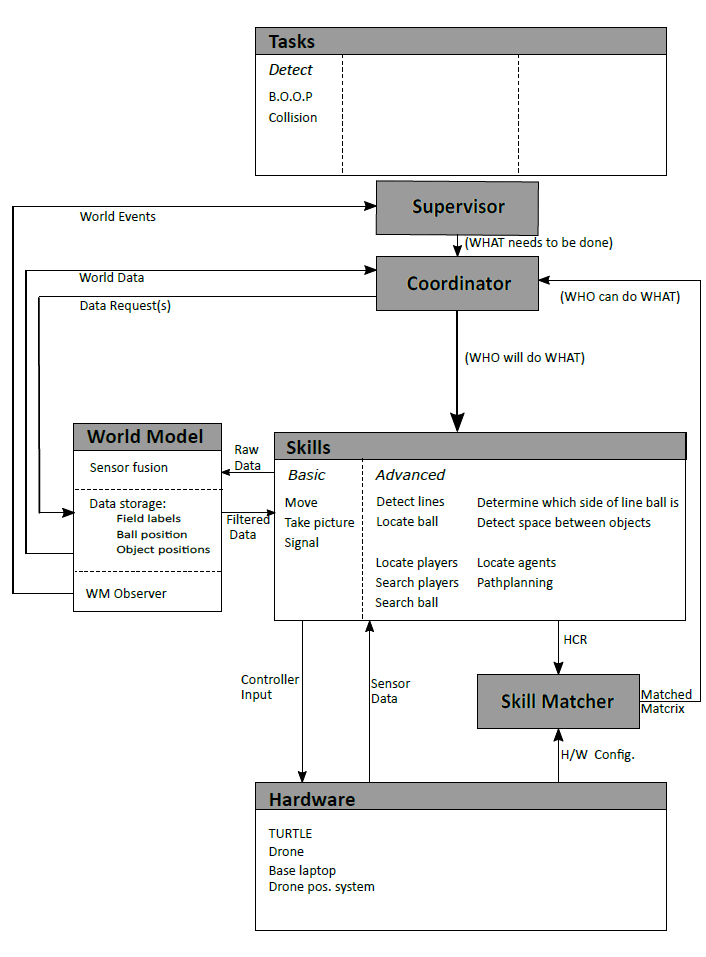System Architecture MSD16: Difference between revisions
No edit summary |
No edit summary |
||
| Line 5: | Line 5: | ||
== Overview == | == Overview == | ||
[[File:sys_Arch_1.png|center|600px|Overview of the system architecture.]] | [[File:sys_Arch_1.png|center|600px|Overview of the system architecture.]] | ||
Based on the objectives of the assignment, the Tasks for the referee system are defined. These tasks are: | Based on the objectives of the assignment, the Tasks for the referee system are defined. These tasks are: | ||
Revision as of 16:08, 20 February 2017
Overview
Based on the objectives of the assignment, the Tasks for the referee system are defined. These tasks are: 1. Detecting ball out of Pitch (BOOP). 2. Detecting collision between players.
Tasks define the objectives in the form of semantics. The words/ sentences and each of these tasks have a number of Skills that define, again semantically how the tasks shall be completed. In the highest level of abstraction, to have a generic architecture, the skills are defined irrespective of the hardware to be chosen.
Other components that appear in this layer of the architecture are the world model and the supervisor.
A world model is a collection of information. It is the representation of how the system perceives the environment.
The supervisor is the task monitor and contains rules to evaluate which tasks-skills are completed and keeps a track of the current status of the environment. Based on the information from the world model, the supervisor can decide which tasks might need to be completed and then pick the respective skills to complete the respective tasks. A supervisor can be assumed to be a task scheduler.
Once task schedule is defined, to gather more insight into how the skills are used, one needs to dive into the second layer of abstraction, represented in orange. Each skill in itself is a signal processing system. It receives an input and produces an output accordingly. Since this is on a lower level of abstraction, it is allowed to pick a context for the signal processing algorithm. In this project it was decided to choose image processing algorithms. Since, there is a possibility to use different kind of hardware (for image processing) at this stage, a configuration file is required. Through this configuration file, the flexibility of the architecture can be maintained to a certain extent. The second layer of the skills is connected with the respective hardware layer.
The third level of abstraction of skills specific image processing algorithms such as Hough transform etc. can be defined. And corresponding hardware selection such as cameras on a drone or a Kinect on a ground robot can be finalized. A skill matcher block exists here so that each skill in the green layer of abstraction can be mapped to a specific hardware component.
The hardware (belonging to layer 3) also serves the purpose of initial perception of the state of different entities that make up the environment. This information or sensor data from one or more sensors can be fed to sensor fusion algorithms. These algorithms belong to the third abstraction layer of the world model. Subsequently, the world model has a second layer of abstraction and finally the top layer where final representation of the entities is gathered.
